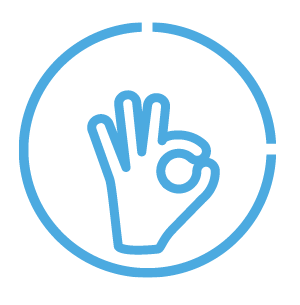You got up tired this morning, feeling like you haven’t slept for a minute. While drinking your third cup of coffee you’re starting to think that caffeine is probably not the answer. A light rest isn’t helpful and the tiredness doesn’t leave you alone. The exhaustion in mental and not physical. When it’s one person, a vacation can be the answer, but when it’s a whole organization? That calls for a different remedy.
“Emotional exhaustion” is getting a lot of coverage these days, and it’s being given many names such as ‘Hippie Disease’ or ‘Work Depression’, but it is now clear that organizations can also get affected from ‘diseases’ and erosion. One organizational disease that is very common is ‘Organizational Tiredness’. Most companies define ‘organizational tiredness’ as an individual’s problem rather than organizational problem, but when production factories work just a fraction of their output and the overall productivity drops down – an individual problem becomes organizational.
-
What is “Organizational Tiredness”? – Systematic erosion and languor amongst employees, which causes inner bureaucratic engagement in place of productivity, a lack of willingness to perform outside of defined responsibilities (such as inter-departmental cooperation) even with the price of damaging the final goal. Moreover, the mental energy (available free energy for acting outside of a person’s comfort zone) is chronically decreasing over time.Symptoms – Low productivity, increase in bureaucracy, augmented turnover in manpower, increase in employee absence, lack of satisfaction from reward, continuous distraction, distraction from the core goal replaced with arguments on how to achieve a task, focus on the action instead of the outcome.Consequences – losses and increase in costs, low organization commitment, poor performance, employees filled with hopelessness for any change, avoiding responsibility, resistance for any kind of change and inability to adjust to changing market demands. As the organizational tiredness goes on its symptoms worsen.
Causes and means of treatment:
- High Blood Pressure – erosion and breakdown result from the organization’s need for maximal effort and productivity constantly with no clear period of reduced pressure. Employees will find themselves subconsciously forced to prioritize their efforts as a way to regulate the system’s pressure. The management who have demanded the immense effort should also be the one to set and declare an endpoint which will be expressed as periodic relief. Extorting the system over time for maximal productivity non-stop will lead to a ‘Heart Attack’.
- Routine Checkup – internal measuring tools for the monitoring and prediction of an organizational functions efficiency and health do not exist in most organizations. Sometimes even good production is not evidence that the ‘disease’ won’t occur. Organizations need to build tools for cross-referencing the scope of employment turnover, according to management’s policy. This as well as tools for testing employees’ faith in the organization and its awareness of their efforts and it’s willingness to recognize it; and tools for measuring employees’ sense of self-fulfillment are important for an organization to establish. Moreover organizations need to understand whether the departments which deal with frequent changes in decision making in uncertain situations, are qualified for it or if they are expected to self-adjust to these situations.
- Recognizing the ‘disease’ – most managements does not believe in ‘organizational tiredness’. Once there is a decrease in productivity most organization’s first reaction will be employee dismissal, then shifts in junior management and finally the “cure” for organizational terminal diseases – replacing the senior management The recognition that the organization is an eroding system will create a positive reality, where solutions are being found instead of going the wrong familiar road.
- ‘Disease Managing’ Vs. ‘Healing Leadership’ – employees who believe that their workplace is only a source for livelihood have the tendency to get infected in organizational diseases. Every organization wants to be excited and united under clear objectives, it wants emotional engagement rather than rational one. Excitement and faith in the organization, increases most organization’s value of an employee, as a patient’s strong belief that the medical treatment will help him heal, management action that can be translated from analytical, rational management to emotional leadership will give a great added value to the actions.
About 95% of population will be affected by ‘Mono’ (Kissing Disease) at a certain point of their lives. Most people will find out about it only in a routine checkup held a long time after. Don’t let your organization find out about the disease post factum. Be aware of the symptoms, use measuring tools, recognize the disease and lead your organization to heal.
One Comment
Leave A Comment








I love it when people come together and share opinions, great blog, keep it up.